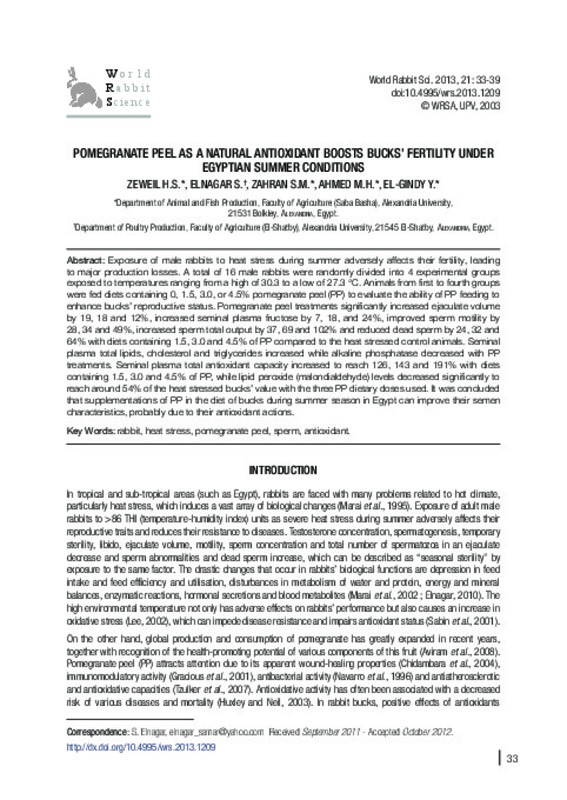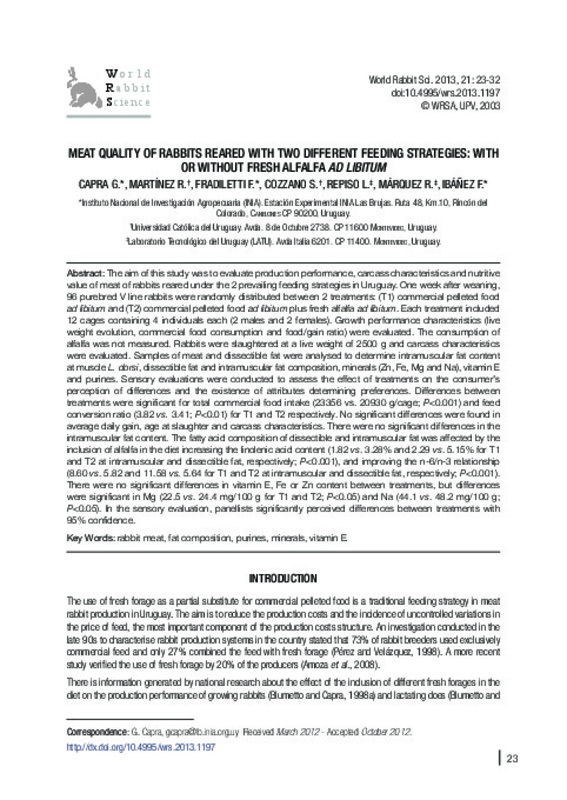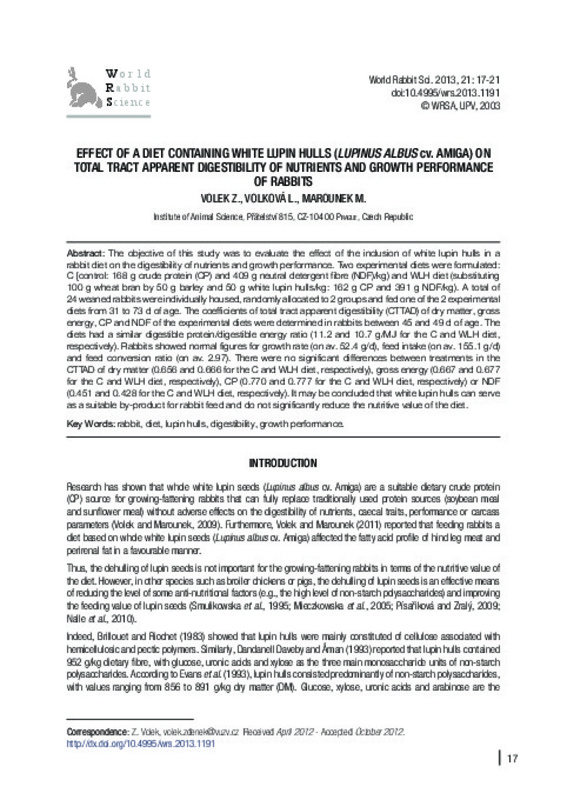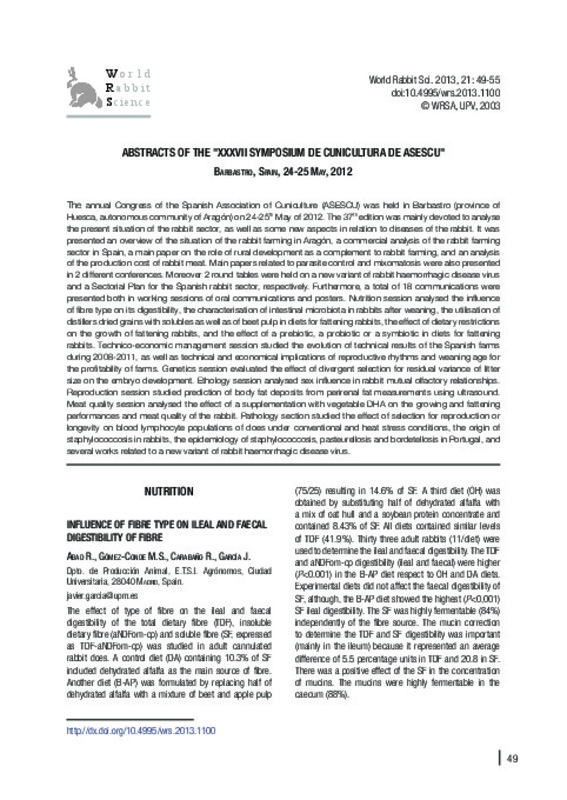- RiuNet repositorio UPV
- :
- Investigación
- :
- Material investigación. Editorial UPV
- :
- Revistas UPV. Editorial UPV
- :
- World Rabbit Science
- :
- World Rabbit Science - Vol. 21 (1)-2013
JavaScript is disabled for your browser. Some features of this site may not work without it.
Refinar
World Rabbit Science - Vol. 21 (1)-2013
Tabla de contenidos
- A meta-analysis on the role of soluble fibre in diets for growing rabbits
- Effect of a diet containing white lupin hulls (Lupinus albus cv. Amiga) on total tract apparent digestibility of nutrients and growth performance of rabbits
- Meat quality of rabbits reared with two different feeding strategies: with or without fresh alfalfa ad libitum
- Pomegranate peel as a natural antioxidant boosts bucks' fertility under Egyptian summer conditions
- Technical Note: Effect of handling on stress-induced hyperthermia in adult rabbits
- Short communication: Influence of vitamins C and E on sperm motility of rabbit bucks
- Abstracts of the "XXXVII Symposium de Cunicultura de ASESCU". Barbastro (Spain) 24-25th of May 2012.









